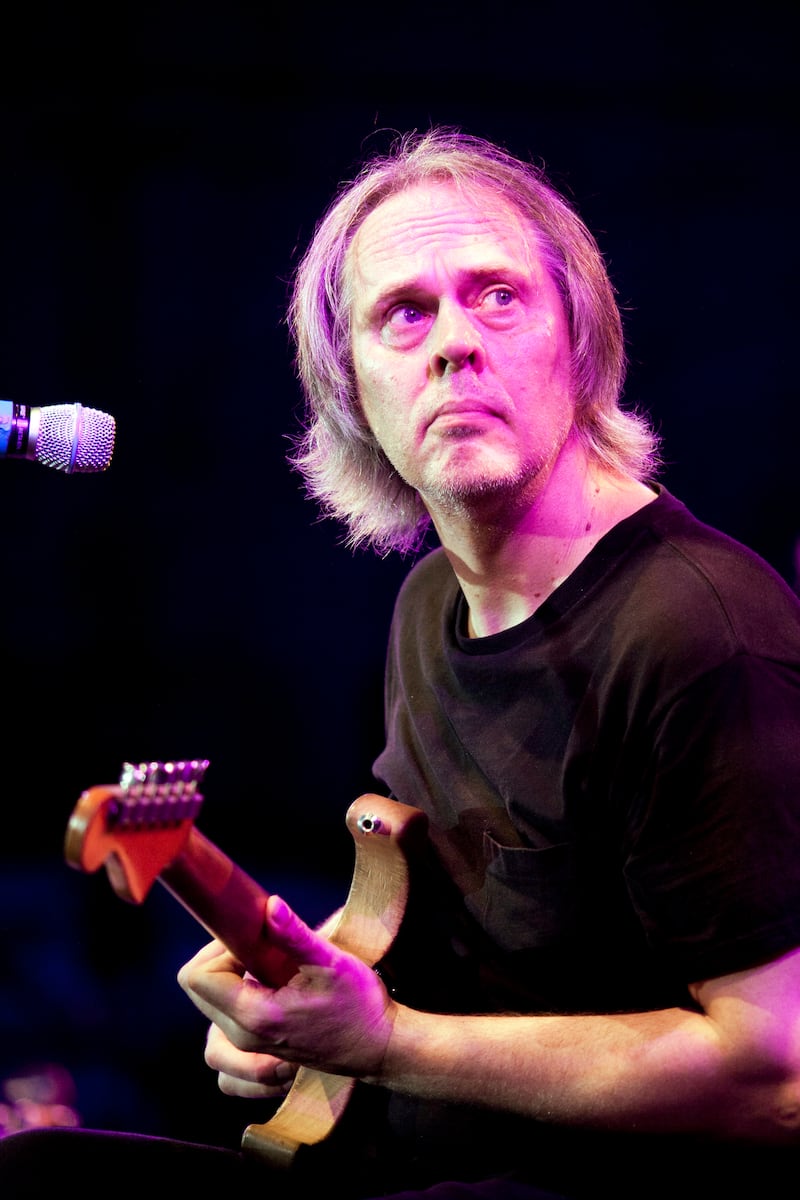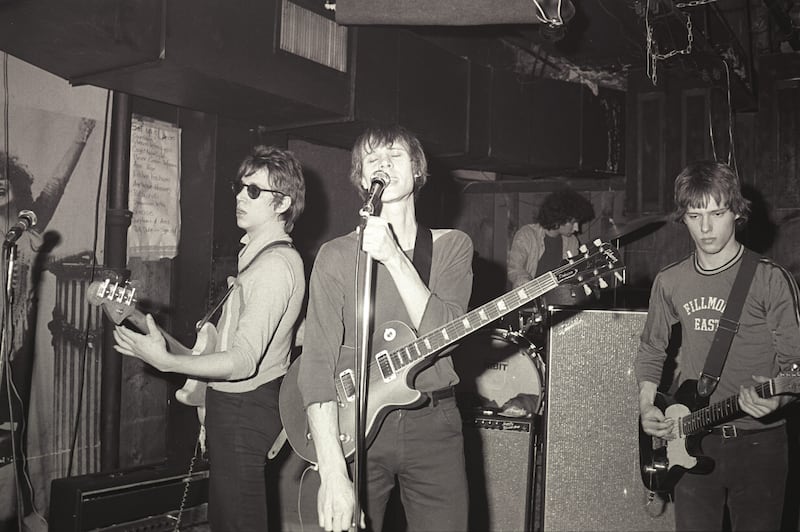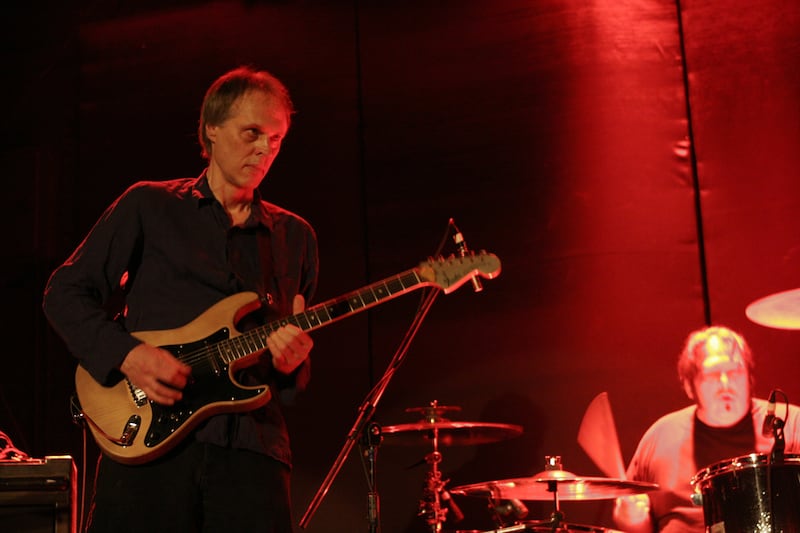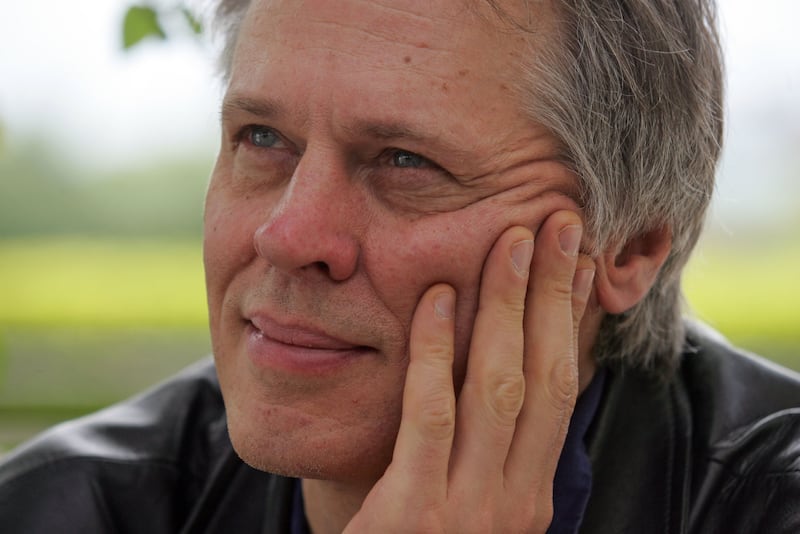Tom Verlaine, whose band Television was one of the most influential to emerge from the New York punk-rock scene centred on the nightclub CBGB, but whose exploratory guitar improvisations and poetic songwriting were never easily categorisable as punk or, for that matter, as any other genre, died on Saturday in New York. He was 73.
His death was announced by Jesse Paris Smith, the daughter of Verlaine’s former love interest (and occasional musical collaborator) Patti Smith, who said that he died “after a brief illness”.
Although Television achieved only minor commercial success and broke up after recording two albums, Verlaine had an enduring influence, especially on his fellow guitarists. (He was also Television’s singer, primary songwriter and co-producer.)
“Verlaine persisted in playing the guitar while those around him were brandishing it as a weapon,” Kristine McKenna wrote in Rolling Stone in 1981.
New homes: comprehensive guide to what’s for sale in Dublin, Wicklow, Kildare, Meath, Cork and around the State
‘They’re supposed to represent us, not sue us’: Crafts council threatens members after critical feedback
If Robert De Niro no longer feels he is able to speak out, one wonders who in the US does
Tom Verlaine plays guitar with angular inverted passion like a thousand bluebirds screaming
— Patti Smith in 1974
Lenny Kaye, guitarist for the Patti Smith Group, said in an interview that “Tom was capable of anything”, adding, “He could move from chaotic soundscapes of free jazz to delicate filigree. It wasn’t covered up with distortion. He had a real sense of the instrument and its expressive powers.”

Reviewing Television for the magazine Rock Scene in 1974, Patti Smith wrote that Verlaine “plays guitar with angular inverted passion like a thousand bluebirds screaming”. She also declared that he had “the most beautiful neck in rock & roll”.
Tom Verlaine was born Thomas Joseph Miller on December 13th, 1949, in Denville, New Jersey, the son of Victor and Lillian Miller. The family relocated to Wilmington, Delaware, when Tom was a child.
He attended a boarding school in Delaware, where he studied classical music and played saxophone. He was equally influenced by rock bands such as the Yardbirds and the Rolling Stones and free-jazz musicians such as Albert Ayler and John Coltrane.
He ran away from school with a classmate, Richard Meyers (later known as Richard Hell). “Our plan was to become poets in Florida where the living was easy,” Hell said in an email. Camping in Alabama, they set a field on fire and were arrested and sent back home.

Hell soon went to New York; after graduating from high school, Verlaine joined him. They wrote and published poetry together; Miller renamed himself Tom Verlaine, in tribute to the 19th-century French poet Paul Verlaine.
Hell recalled the two friends being exuberant teenagers on Second Avenue in Manhattan, near St Mark’s Church, in the early days of spring: “As we walked down the street, we’d start rapidly weaving between the parking meters making buzzing sounds with our mouths and flapping our bent arms, fertilising the parking meters. Tom was often lightheaded and whimsical back then.”
In 1972, inspired by the New York Dolls, they started a band called the Neon Boys. Verlaine bought an electric Fender Jazzmaster guitar for himself and picked out a $50 bass for Hell; their friend Billy Ficca joined them on drums.
In 1973 they added Richard Lloyd, a guitarist, and renamed themselves Television. They chose the name because they had a distaste for the medium and hoped to provide an alternative. Verlaine also enjoyed the resonance with his initials, TV.
He was very much not into the persona of being a rock star. His legacy is that he was always looking for a new expression of who he could be
— Lenny Kaye on Tom Verlaine
After seeing a performance by Television in 1974, David Bowie called the group “the most original band I’ve seen in New York”. However, Hell’s emotive, chaotic outlook on music clashed with Verlaine’s more controlled approach. Hell was replaced by Fred Smith in 1975 and later went on to form the punk band Richard Hell and the Voidoids.
Television signed with Elektra Records and in 1977 released their first album, Marquee Moon, which featured hypnotic guitar work that ranged from mournful to ecstatic.
The album contained eight songs, mostly written by Verlaine, and showcased two lead guitarists who did not just trade solos but also built sonic cathedrals out of countermelodies and interlocking parts. Although Verlaine was renowned as a lead guitarist, Lloyd said that his work as rhythm guitarist was underrated. “He used to drag me kicking and screaming through five minutes of solos,” he said in an interview.

Verlaine’s lyrics (which he sang in a pinched but expressive tenor) were sometimes poetically abstract, sometimes slyly funny. The song Venus featured the line “I fell right into the arms of Venus de Milo.”
In 1991, Verlaine told Details magazine: “As peculiar as it sounds, I’ve always thought that we were a pop band. You know, I always thought Marquee Moon was a bunch of cool singles. And then I’d realise, Christ, this song is 10 minutes long, with two guitar solos.”
[ Interview: Tom Verlaine, a very reluctant Television star (2013 interviewOpens in new window ]
The New York punk scene inspired sonic experimentation in multiple directions, from the aggression of the Ramones to the tightly wound funk of Talking Heads to the calloused poetry of Smith. But no act seemed to push further than Television.
“Once we all got past tuning problems, we could explore at will,” Kaye said. “Those couple of years where nobody knew where CBGB was, it was a gloriously experimental time.”

Although Marquee Moon received rapturous reviews and now regularly appears on lists of the greatest rock albums ever made, that did not translate into significant sales or airplay. “Shooting himself in the foot was a particular talent of his,” Lloyd said of Verlaine. “He had a will of iron, and he would say no to big tours and big shows.”
Asked by the New York Times in 2006 to summarise his life, Verlaine replied, “Struggling not to have a professional career.”
Television released a second album, Adventure, in 1978 and then broke up. The band reunited in 1992 for an album simply called Television, followed by periodic tours.
The group’s members continued to employ “an experimental approach”, Verlaine told Details. “It’s like when we started, all falling together from different angles.”
Verlaine released nine albums under his own name over the decades, some emphasising songs and others emphasising guitar heroics. Reviewing a performance by his band at the Bowery Ballroom in 2006, the New York Times critic Jon Pareles wrote: “Mr Verlaine’s guitar leads didn’t flaunt virtuosity by streaking above the beat. They tugged against it instead: lagging deliberately behind, clawing chords on offbeats, trickling around it or rising in craggy, determined lines.”

He also wrote film scores, including for silent movies by Man Ray and Fernand Léger, and made occasional guest appearances with the Patti Smith Group. In 2006 he told the New York Times, “I liked recording, but I wasn’t much in the mood to do it until a couple years ago.”
He was, Kaye said, “very much not into the persona of being a rock star. His legacy is that he was always looking for a new expression of who he could be.”
Verlaine leaves no immediate survivors. However, he does leave an outsize influence on other musicians. The 2022 album Blue Rev, by the Canadian group Alvvays, for example, includes a song titled Tom Verlaine.
In 1981, Verlaine told Rolling Stone: “I recently realised that Television has influenced a lot of [British and Irish bands]. Echo and the Bunnymen, U2, Teardrop Explodes – it’s obvious what they’ve listened to and what they’re going for. When I was 16 I listened to Yardbirds records and thought, God, this is great. It’s gratifying to think that people listened to Television albums and felt the same.” – This article originally appeared in The New York Times


















